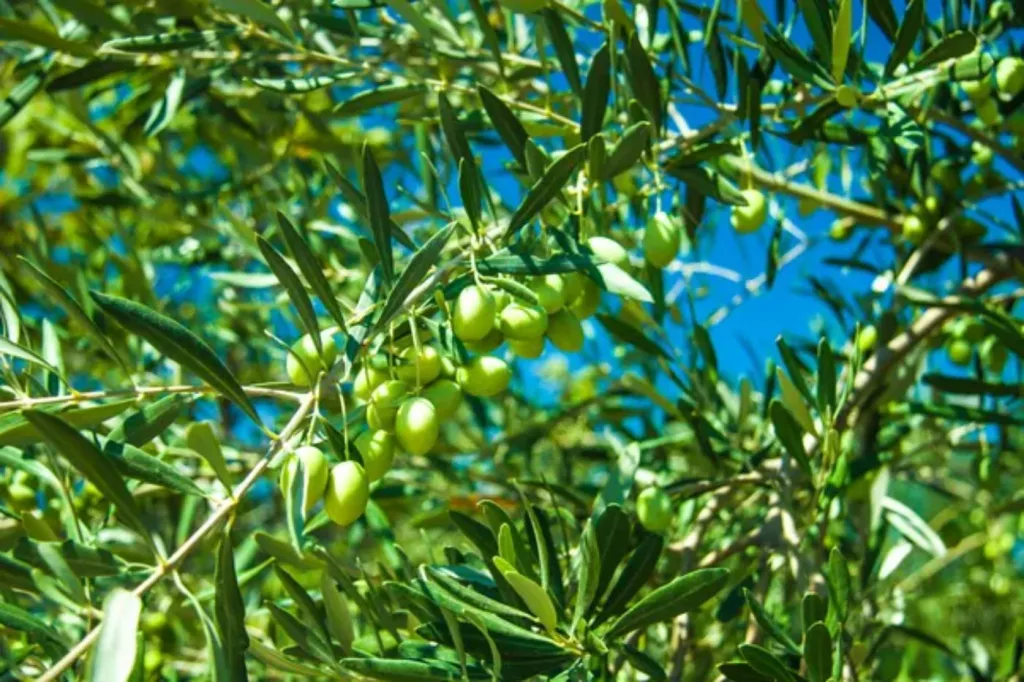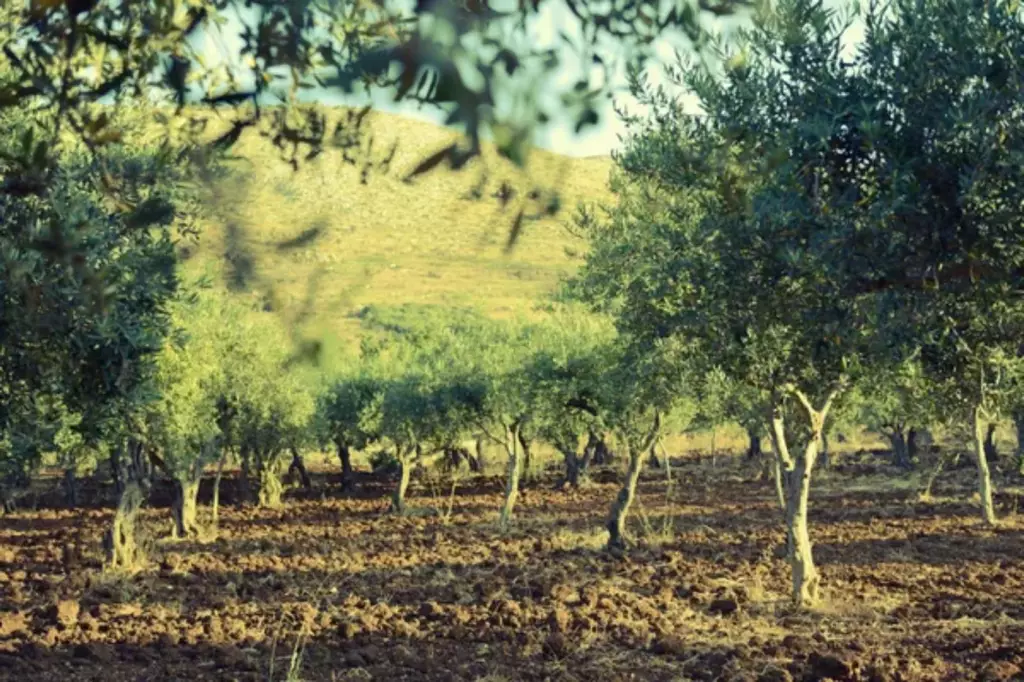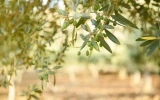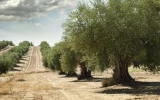How Long Do Olive Trees Live? (Complete Life Cycle)
Olive trees have been cultivated for over 6,000 years across the Mediterranean region. Depending on the variety and growing conditions, these trees can begin producing fruit within 3 to 12 years of planting. In this article, we will explore the fascinating life cycle of olive trees, delving into the stages from seed germination to ancient maturity.
Olive trees are known for their longevity, with a typical lifespan ranging from 300 to 600 years. Some olive trees can live over 1,000 years. The complete life cycle of an olive tree includes germination, seedling growth, maturity, and a long period of fruit-bearing before eventual decline.
While olive trees can live for hundreds, even thousands of years, their productivity peaks between 35 and 150 years. Beyond this, they may still bear fruit, but the yield gradually decreases. Let's jump in and find out what makes olive trees live longer.
Summary
- Olive trees can potentially live for 2000 years, with some ancient specimens like the "Olive Tree of Vouves" and "The Sisters" having lifespans ranging from over 1,000 to more than 3,000 years, standing as living monuments to endurance and longevity.
- Olive trees' exceptional resilience to environmental stresses, ability to regenerate from their roots, and diligent cultivation practices, all contribute to their lifespans of up to several millennia.
- The growth of olive trees encompasses several stages, starting with germination and moving through seedling growth, development, flowering, fruiting, and finally reaching maturity, where they can produce fruit for over a century with proper care.

On this page:
Lifespan of an Olive Tree
With the right growing conditions and proper care, the average lifespan of olive trees is 300 to 500 years. With exceptional care, they can surpass 1,000 years.
The optimal environment for olive trees mimics the Mediterranean climate—long, hot summers and mild, wet winters—to nurture their growth and health.
When you decide to grow an olive tree, keep in mind it's a long-term commitment. It takes about 3 to 6 years for a tree to produce its first olives outdoors, with indoor trees bearing fruit sooner.

However, indoor trees miss out on the natural seasonal cycles that are vital for healthy growth and fruit production.
Lifespan of olive trees based on species variation
Your olive tree's lifespan can be greatly influenced by its genetic makeup. Certain factors within their DNA can render them more resistant to disease and environmental stresses, which in turn can extend their life significantly.
While Olea europaea is the most commonly known, there are subspecies and varieties, each with its unique characteristics and longevity.
For example, the robust nature of the wild olive tree (Olea europaea var. sylvestris) often leads to a longer life compared to cultivated types.
Inherent genetic traits combined with species variation account for the survival and long lifespans of olive trees.
Trees grown from seeds of ancient and hardy trees may inherit these long-life characteristics. It's a fascinating blend of nature's blueprint and the resilience of a species adapted to thrive for centuries.
Lifespan as per climate and environment
The longevity of olive trees is significantly impacted by climate and environment.
In their ideal Mediterranean setting, these trees flourish with long lifespans, typically lasting 300 to 500 years.
This region provides a perfect balance of full sun, mild winters, and a suitable temperature range which encourages growth and fruit production.
In North America, you'll find olive trees in USDA zone 8, including parts of California and Oregon. Here, the trees enjoy a conducive environment similar to the Mediterranean, allowing them to live for hundreds of years.
However, stressing factors like extreme cold or inadequate sun can reduce their lifespan. Olive trees also thrive in countries like Turkey and Chile, where the climate mimics their native environment.
Ensuring they receive enough full sun and are shielded from severe cold is vital for their survival. While they can tolerate partial sun, their growth may slow down, affecting their overall health and longevity.
Lifespan based on cultivation practices
Proper care can lead to olive trees living between 300 to 500 years, with some trees even surpassing 1000 years when given an ideal environment and attentive maintenance.
To ensure your olive tree thrives for many years, you'll want to focus on a comprehensive care and maintenance routine that promotes longevity. Here are a few tips to help you on your way:
Olive trees need a consistent water supply
Your olive tree needs consistent watering, especially during dry spells. Ensure the soil is well-drained to prevent waterlogging, which can harm the tree's roots. Young trees especially need regular watering until they're well established.
Soil conditions required for olive trees
A key to a healthy olive tree is well-draining soil with a pH of around 6.0-8.0.
If your soil isn't naturally well-draining, consider adding perlite or small rocks to improve its structure and aeration.
Fertilizer requirement for olive trees
Use a balanced fertilizer to provide your tree with the necessary nutrients.
It's best to fertilize in the spring to support the tree's growth and fruit production. However, over-fertilization can be detrimental, so follow guidelines on amounts and frequency.

Olive trees require regular pruning
Regular pruning encourages growth by reducing energy expenditure on unnecessary branches. It also helps maintain the health of the tree by removing any diseased or dead wood.
Olive trees need full sun exposure
Olive trees require plenty of sun—at least six hours of direct exposure daily. This is crucial for your tree's growth and fruit production, so ensure it's planted in a sunny spot or, if indoors, near a large south-facing window.
Can Olive Trees Live 2000 Years?
The potential for an olive tree to live for 2000 years is not just a myth; several ancient olive trees around the Mediterranean basin are believed to be over a thousand years old, some even claiming to reach or surpass the 2000-year mark.
These ancient trees are found in countries like Greece, Italy, and Israel, among others.
Why do olive trees live so long?
Several factors contribute to the longevity of olive trees:
-
Regeneration ability: Olive trees can regenerate from their roots even if the above-ground structure is destroyed, which means that even old trees can produce new shoots and continue to grow.
-
Hardy nature: They are incredibly resilient and can withstand harsh conditions, including drought, diseases, and pests, better than many other tree species.
-
Care and cultivation: The cultural significance of olive trees in the Mediterranean region has led to generations of careful cultivation and maintenance, aiding their longevity.
Despite their age, many of these ancient trees continue to produce olives, which are harvested for oil and various other products.
The sight of an olive tree that has lived through centuries, bearing fruit, is indeed remarkable and serves as a testament to nature's endurance and the human effort to preserve and nurture these living monuments.
What Is the Maximum Age of an Olive Tree?
On average, you can expect an olive tree to live between 300 - 500 years. These enduring trees grow slowly, which contributes to their significant lifespans.
With optimal conditions and diligent care, some olive trees surpass this average. There are instances where olive trees live well over 1,000 years. The ancient trees become living witnesses to centuries of history.
Historical examples of long-live olive trees
The oldest olive trees are legends in their own right, with the most venerable known as the "Olive Tree of Vouves", located on the island of Crete, estimated to be around 2,000 to 3,000 years old. These trees are remarkable examples of resilience and endurance.
| Historical Olive Tree | Estimated Age | Location |
|---|---|---|
| The Olive Tree of Vouves | 2,500 years | Crete, Greece |
| Al Badawi | Over 3,000 years | Bethlehem |
| The Sisters | More than 1,000 years | Sardinia |
In Italy, Sardinia's "The Sisters" are another exemplar of olive trees that have withstood the test of time, with ages exceeding 1,000 years. These trees still stand as a testament to the enduring nature of the species.
Pests and Diseases Affecting the Lifespan of Olive Trees
Olive trees are resilient, but like all plants, they can be affected by pests and diseases which may shorten their lifespan. You need to recognize and treat these threats promptly.
The Olive Fruit Fly poses a serious threat, laying eggs in the fruit and ruining your harvest. Keep an eye out for the telltale signs of their maggots. With proper management, you can prevent significant damage.
Verticillium wilt, caused by soil-borne fungi, can be managed by avoiding water stress and root damage to prolong your olive tree's health.
Olive trees are also susceptible to Peacock spot, a fungal disease causing leaf spots and defoliation. To combat this, apply copper-based fungicides and ensure good air circulation.
Proper watering is critical as both over- and under-watering can invite diseases like Root rot.
Below is a brief table outlining common pests and diseases, with suggested management procedures:
| Threat | Management Strategy |
|---|---|
| Olive fruit fly | Use traps; apply bait sprays. |
| Verticillium wilt | Provide good drainage; remove infected trees to prevent spread. |
| Peacock spot | Apply fungicides; prune for air circulation. |
| Root rot | Ensure proper watering; improve soil drainage. |
Stages of Growth of Olive Trees
When you're curious about the stages of an olive tree's life cycle, you should know that it is composed of several key phases: from seed germination to maturity.

Germination
- Begins with planting a fresh olive seed.
- Requires moist soil conditions.
The germination process can take several weeks, typically transplanted in autumn. - Seedlings need shade and frequent watering, especially when in pots.
Seedling growth
- Slow growth rate initially.
- Requires careful management including shading and regular watering.
- The growth phase sees the seedlings growing about 12 inches per year.
Development
- This stage marks the development of the tree's structure.
- Takes several years for the tree to reach notable size.
- The tree gradually becomes more resilient and requires less intensive care.
Flowering
- Olive trees start flowering once they are well-established.
- These trees are self-pollinating, which simplifies the fruit production process.
- Flowering is a precursor to fruit development.
To know what the flowers of olive trees look like, you can use the visual guide in this article.
Fruiting
- After pollination, tiny olives form and gradually swell, leading up to the harvest season.
- This phase is visible and marks a significant milestone in the tree's life cycle.
Maturity
- Olive trees can bear fruit for many years, often lasting well beyond a century. But they only start producing commercially viable yields around 5 to 10 years after planting.
- The maturity phase is characterized by a slowing growth rate but continued fruit production.
- Proper care during this stage can ensure the tree remains productive.
How to Tell the Age of an Olive Tree
Determining the specific age of your olive tree can be intriguing, especially given that some olive trees live for centuries!
One reliable method is through the trunk-circumference measurement.

To start, find the primary trunk of your tree. This might be complicated due to their multiple-trunk structures.
-
Measure the trunk circumference: Wrap your measuring tape around the widest part of the tree's main trunk, at about 4.5 feet from the ground. This is the standard height for measuring tree girth.
-
Calculate age using growth rates: Olive trees typically grow about 12 inches in height per year. By knowing this growth rate, you can roughly estimate the age based on the tree's size. However, precision can be challenging and influenced by growing conditions.
For an even closer estimate, if your tree's circumference allows, you can count the tree's growth rings.
You would have to take a core sample or look at a cross-section of the tree, which might not be ideal as it can harm your tree.
Alternatively, observing the olive tree’s general appearance and comparing it to known age benchmarks can offer a ballpark figure on the age.
A youthful olive tree will have a smoother bark and less gnarled branches, whereas an older tree will typically show more rugged and twisted bark and branches.
Remember, these methods will give you an approximation. To get a detailed age estimation, professional arborists or dendrochronologists can assess your tree using more complex techniques.


